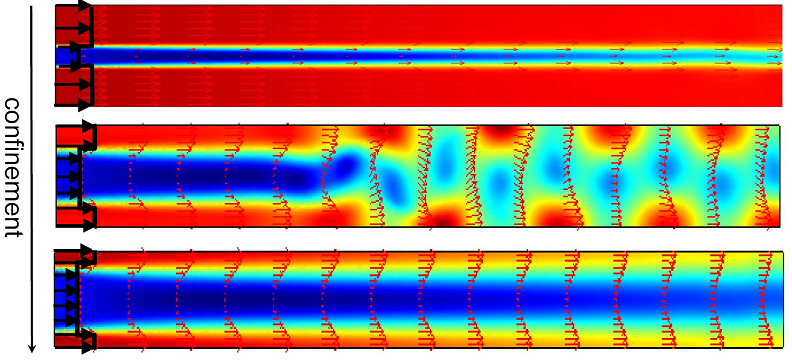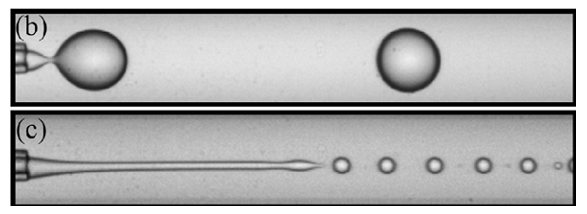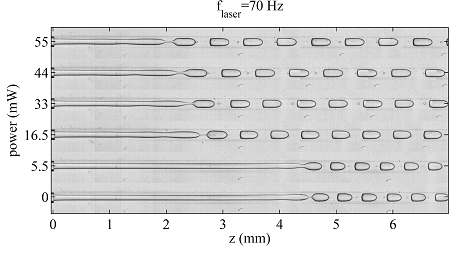INFLUENCE OF CONFINEMENT ON SPATIALLY DEVELOPPING WAKES.
Together with Luca Biancofiore (PhD student at Laboratoire Dieudonné in Nice), R. Pasquetti (Nice), we have been able, using direct numerical simulations, LES and stability analyses to demonstrate the destabilizing influence of confining walls in spatially varying real wake flows at moderate (see figure 1).

Figure 1: Snapshot of the flow field at Re = 100 as a steady regime or a limit cycle is
reached for the same inner to outer velocity ratio and different confinement ratios (L. Biancofiore, PhD thesis)
Figure 1 shows that the flow is the most unstable at intermediate values of the confinement ratio. At higher values of the Reynolds number, a new vacillating instability has been discivered, characterized by a slowly vacillating vortex shedding front. At even higher reynolds numbers, we have used LES to study the influence of confinement onto the onset and intensity of turbulence.
INFLUENCE OF CONFINEMENT ON DRIPPING-JETTING TRANSITION
The transition from dripping (droplet formation close to the nozzle) to jetting (droplet formation farther downstream) in microfluidic co-axial injection devices has recently been related to the transition from an absolute instability to a convective instability, as seen in figure 2.

Figure 2: Dripping (b) to jetting (c) transition in microfluidic coaxial injection devices (from Guillot et al. 2008).
Together we M.-L. Cordero and C. Baroud from LadHyX, we have studied how this system reacts to a synchronized harmonic forcing, using a pulsating laser actuation. This technique uses the selective dispersion relation of immiscible co-axial flows to reinforce the wavelength selection and thereby the monodispersity of the droplets formed.

Figure 3: Images of the jet perturbed with a laser beam at a constant frequency
flaser = 70Hz and different laser powers (Cordero et al., 2011)
However, we have also shown that the local instability theory could not predict correctly the frequency selection in the dripping regime. This has motivated further investigations funded by FNS through the PhD thesis of L. Augello.